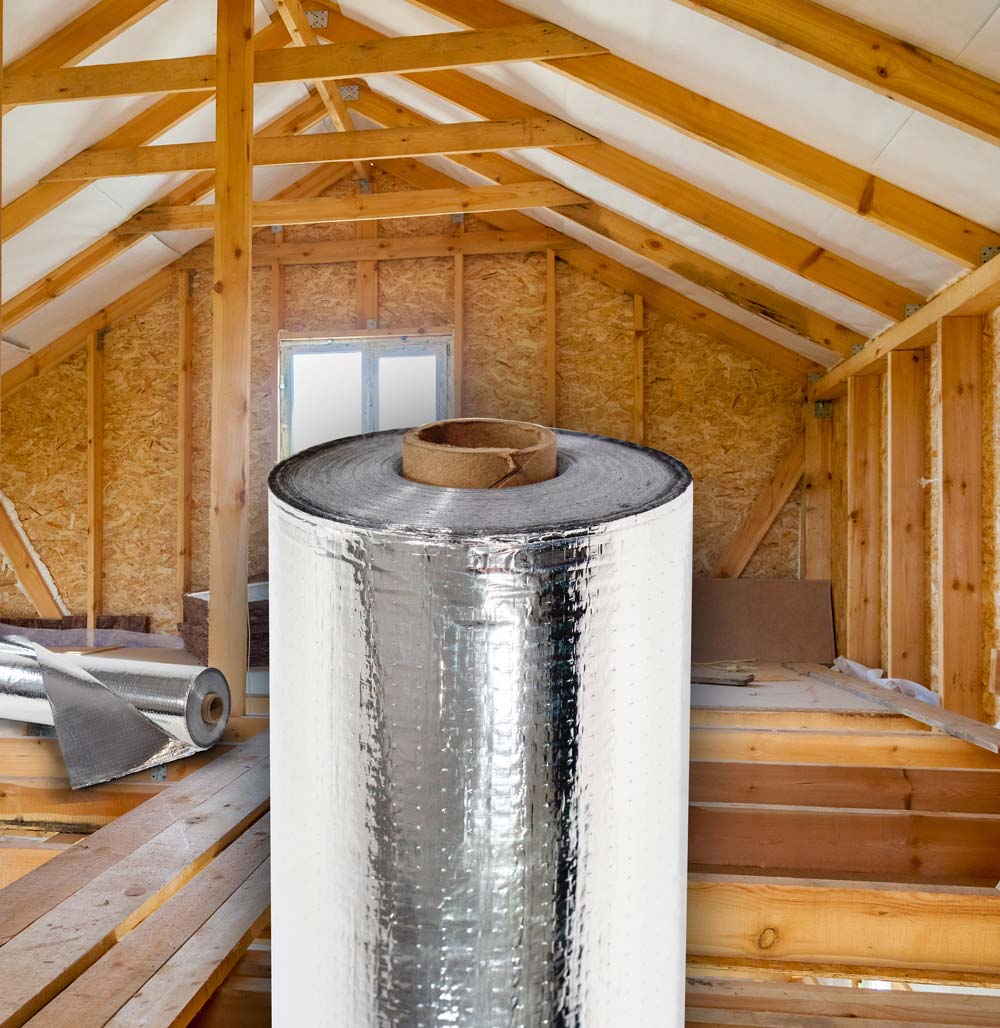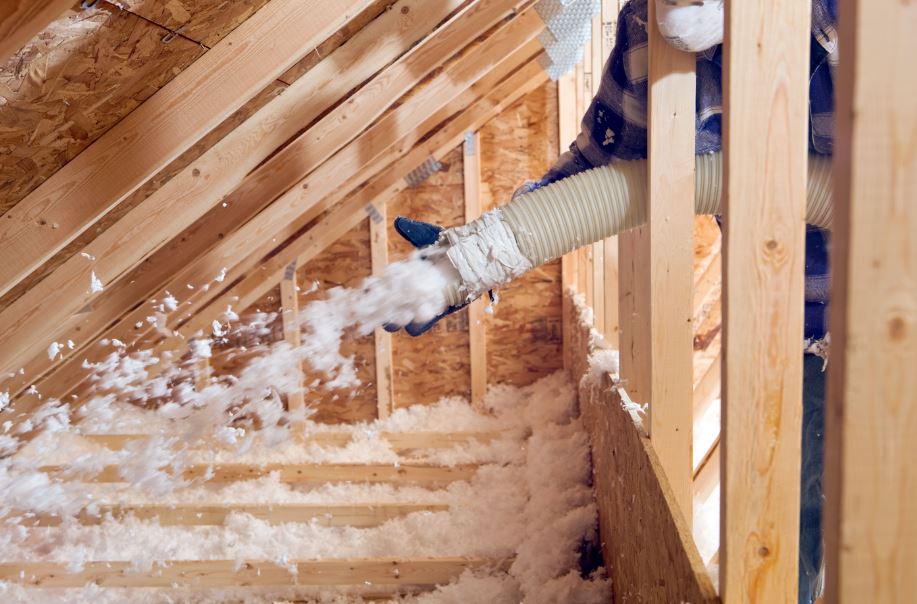Save Money and Improve Comfort with Professional Attic Insulation DFW
Discover the Various Kinds Of Attic Insulation and Their One-of-a-kind Advantages for Your Home's Power Efficiency

Fiberglass Insulation
Fiberglass insulation is just one of the most commonly made use of materials for attic room insulation due to its exceptional thermal efficiency and cost-effectiveness. Composed of tiny glass fibers, this product effectively traps air, developing an insulating barrier that assists preserve regular interior temperatures. Its high R-value per inch makes it particularly effective at standing up to warmth transfer, which is important for power preservation in homes.
Installation of fiberglass insulation is fairly straightforward, commonly available in batts or loose-fill types, accommodating numerous attic setups. In addition, it is resistant and non-combustible to wetness, minimizing the danger of mold and mildew development. This toughness adds to its long life, making fiberglass a sensible lasting financial investment for home owners.
Moreover, fiberglass insulation is often manufactured from recycled materials, which enhances its eco-friendliness. The product can additionally add to soundproofing, decreasing sound transfer in between areas. While it is necessary to put on safety gear throughout setup to avoid irritability from the fibers, the general benefits of fiberglass insulation, including power cost savings and environmental considerations, make it a popular choice for improving attic performance and promoting a comfy living atmosphere.
Spray Foam Insulation
Spray foam insulation is a highly effective choice for attic insulation, known for its superior air securing and thermal efficiency. This cutting-edge insulation material is made up of a blend of isocyanate and polyol material, which, when incorporated, broadens swiftly to fill gaps and cavities in the attic room space. Its capacity to stick to various surface areas ensures a constant barrier versus air leakages, substantially decreasing heat loss during colder months and warmth gain during warmer seasons.
Among the vital benefits of spray foam insulation is its high R-value per inch, which implies it gives excellent thermal resistance in a reasonably thin application. This is especially useful in attic rooms where room is often limited. In addition, spray foam can help decrease moisture buildup, decreasing the risk of mold and mildew and mildew growth, which can be destructive to both the structure and indoor air top quality.
While the preliminary cost of spray foam insulation might be more than conventional alternatives, its long-term power financial savings, combined with enhanced convenience and enhanced home value, make it a worthwhile financial investment for homeowners looking for improved energy effectiveness. Attic Insulation DFW. In general, spray foam insulation stands out as an efficient remedy for enhancing attic insulation
Cellulose Insulation

Cellulose insulation is a prominent selection for attic room insulation, largely made up of recycled paper products treated with fire retardants. This ecologically pleasant alternative is understood for its excellent thermal efficiency, efficiently lowering warmth transfer in both summertime and wintertime months. The dense composition of cellulose permits it to fill spaces and spaces in attic room spaces, supplying a smooth barrier against air leaks.
One of the significant benefits of cellulose insulation is its capacity to resist mold and parasites, owing to the fire resistant treatments used during production. In addition, it flaunts a high R-value per inch, which translates into premium energy effectiveness. Homeowners can anticipate reduced heating & cooling prices as an outcome of improved insulation.
Installment is normally achieved through blowing loosened cellulose into the desired location, enabling a reliable and fast procedure. This technique likewise decreases disruption to the existing structure. Cellulose insulation has a reasonably reduced ecological effect, as its production procedure uses recycled materials, contributing to lasting structure practices.
Rock Woollen Insulation
Among the numerous alternatives for attic room insulation, rock woollen, additionally referred to as mineral woollen, stands apart because of its remarkable thermal you can find out more and acoustic efficiency. Made from all-natural or recycled products, rock woollen is created by melting rock and spinning it into fibers, resulting in an item that supplies superb insulation homes.
Among the substantial benefits of rock wool insulation is its high R-value, which indicates its effectiveness in Bonuses resisting heat flow. This particular not just enhances power performance but also adds to keeping a comfortable indoor temperature year-round. Additionally, rock wool is inherently fireproof, making it a safer choice for homes as it can withstand high temperatures without melting or releasing harmful fumes.
Moreover, rock woollen insulation stands out in soundproofing capabilities, successfully decreasing sound transmission between spaces and from outside sources. Generally, rock woollen insulation provides a comprehensive option for improving power effectiveness, security, and convenience in domestic settings.
Glowing Barrier Insulation
Radiant barrier insulation offers as an effective remedy for lessening warm transfer in attics, specifically in warmer environments. This kind of insulation jobs by reflecting radiant warm away from living areas, thereby lowering the amount of heat that enters a home throughout hot weather condition - Attic Insulation DFW. Normally composed of a highly reflective material, such as light weight aluminum foil, glowing obstacles are installed in attics, facing the roof, where they can intercept incoming warm from the sunlight
The main benefit of glowing barrier insulation is its ability to reduced air conditioning prices. By reflecting heat as opposed to absorbing it, radiant obstacles can help preserve a more stable interior temperature level, reducing the work on air conditioning systems. This effectiveness equates right into reduced energy expenses and increased comfort for homeowners.
In addition to energy savings, radiant barriers can likewise add to enhanced interior air top quality. By minimizing warmth accumulation, they help decrease humidity levels, which can stop mold and mildew development and boost total air flow. When mounted appropriately, radiant obstacle insulation can be an indispensable enhancement to any type of energy-efficient home, making it a worthy factor to consider for homeowners aiming to improve their attic insulation method.
Conclusion
Finally, comprehending the different kinds of attic insulation-- fiberglass, spray foam, cellulose, rock woollen, and radiant barriers-- enables property owners to make internet informed choices regarding energy performance. Each insulation kind offers distinct advantages, such as exceptional thermal resistance, wetness management, and audio depletion. By selecting the appropriate insulation material, significant decreases in energy prices can be attained, along with improvements in indoor convenience. Eventually, the best selection contributes to a much more sustainable living atmosphere and promotes overall power preservation.

In conclusion, recognizing the numerous kinds of attic room insulation-- fiberglass, spray foam, cellulose, rock woollen, and radiant barriers-- makes it possible for home owners to make enlightened decisions pertaining to energy performance.